I’m a dog trainer in a retail pet store, and this has its share of shenanigans! The stories and gossips are never-ending! Don’t believe me? Try having a beer with me! I’m a huge fan of dog training classes though, and this article is meant to help you learn what to expect from a group class.
Dog training classes are a clever investment because your dog will learn good behavior and you’ll both have fun. You’re surrounded by like-minded puppy parents who share the euphoria as well as the overwhelm of having a puppy.
But have you ever thought of what the trainer would want you to know before you sign up?
This article is written by Siddhika Bhat, a certified dog trainer, behaviorist and blogger. She is a dog trainer at PetSmart and has a background in training and working with several dogs across multiple countries. You can learn more about her and her training style on her blog, Wag a Bond.
What to expect from group dog training classes
As the name suggests, dog training classes are taught by dog trainers or behaviorists in a group setting.
There are several types of dog training classes such as:
- puppy obedience classes
- Intermediate obedience
- advanced obedience
- nosework
- agility classes
- behavioral work
- Canine Good Citizen classes
- therapy classes, etc.
Depending on your requirement and training needs, you can enroll accordingly for what your dog is most suitable for.
Do group dog training classes help with aggression?
Dog training classes typically do not cover dog aggression issues, at least not in detail. Here are some other issues that are typically not addressed in detail during a group class:
- separation anxiety
- food aggression
- resource guarding
- excessive herding behavior
- leash or barrier aggression
These complex issues are typically not addressed in the group setting because every dog has different triggers. Each dog will be at a different level when it comes to behavioral problems. Trying to work with it in a group class will lead to nothing but a disaster.
These issues should instead be dealt with one-on-one by a qualified behaviorist or trainer. And you could certainly ask your instructor if this is something she offers outside of class.
What should you expect from a group dog or puppy class?
When you decide to enroll in group dog training classes, it’s important you have the right expectations in mind.
I get several cases regularly where dog owners walk into the class expecting the trainer to wave a magic wand and give them a well-behaved pup by the end of 6 sessions!
Well, let me burst that bubble for you! The training you receive in a class is important, but you must practice at home with your dog many times per week.
7 things to expect from group dog training classes:
1. Dog body language. Recognize basic puppy and dog body language and respond accordingly.
2. Basic obedience. Sit, down, stay, heel and come.
3. Better communication. Be able to communicate with and give directions to your dog in day to day situations.
4. Socialize. Both with other dogs and humans while teaching your dog to focus back on you on command.
5. Limited personal attention. The trainer cannot give a lot of personal attention to each and every dog and pet parent.
6. Some things take longer than others. Some commands are super easy while some can take time. Never rush into anything.
7. Dogs learn at their own pace. Every puppy or dog is a bit different. Don’t pressure your dog.
Signs your dog is a good fit for group classes
Dog obedience training class is one of the best places to get started with basic obedience training with your dog. It enables your dog to get more confident around people and dogs, at the same time teaches your dog to focus on command.
For a puppy that is comfortable being outdoors and around other people and dogs, I would hands down recommend group classes over a private session. Not only is it cost-effective, but the benefits are totally worthwhile!
If you see these signs in your dog, he is probably a good fit for dog training classes:
- He likes interacting with other dogs
- He’s shy but curious
- He takes his time but eventually settles down in the presence of other dogs
- He’s vocal but you still have control with rewards and focus training
- Your dog is indifferent towards other dogs
- He’s a puppy and has had some kind of positive interaction with dogs before
Sometimes first-timers feel intimidated (both the dogs and the handlers!). Try to keep things positive for your puppy. Remember, the kind of interaction your puppy has with a stimulus for the first time can have lasting impressions.
For example, if your puppy is super shy and he encounters a boisterous pup in the class who jumps all over him, your pup might end up having apprehensions about all dogs. So just be aware of the situation and how your puppy is doing.
See That Mutt’s post: My dog got kicked out of obedience class!
Dogs that are not a good fit for a group class
I have nothing but the utmost respect for people who invest time and effort in training their dogs. However, what appears as fun to you may not be perceived the same by your dog. If you have a dog that’s terrified of other dogs or people, dog training classes might not be the best place for you to start.
If you’re not sure, you can always ask the trainer ahead of time. You could also potentially go and observe a class yourself, without your dog along.
Crowding your dog with other dogs when he’s terrified of them will not magically make him love dogs. It will just get him to the point of aggression a lot faster.
You might want to consider a one-on-one session instead if:
1. Your dog is extremely anxious around other dogs.
2. He barks uncontrollably even at the sight of other dogs.
3. He fixates on other dogs.
4. He’s aggressive towards other dogs or humans.
5. His behavior and aggression is unpredictable.
6. Your dog has possessive aggression, resource guarding, or any other form of behavioral problem triggered by the presence of another person or dog.
7. His excitement and enthusiasm towards other dogs is extremely difficult for you to control. In this case, it’s best to first work around his excitement and then consider going to classes when he’s a lot more manageable by you.
8. He shuts down to the point of no response to commands or high-value treats.
Again, it may be best to call and discuss your dog’s issues ahead of time with the trainer. She may have some suggestions on the right path for your dog.
You could always do one or two private sessions before attempting the group class. And some dogs just never do well in a group setting, and that’s OK too.
A dog owner’s responsibility in a group class
A well behaved dog is usually the result of awesome teamwork between the dog and the handler. You have to be mindful of your pup and yourself in dog training classes to ensure you optimize them fully.
These are your responsibilities as a dog owner:
1. Make sure your puppy is manageable. Keep him on a 4ft or 6ft leash and keep him close. Don’t let him go barging up to the other dogs.
2. Don’t let your pup disturb the class when everyone is practicing. Letting your puppy have another pup’s treats while the other puppy is learning to “Leave it” is NOT cute.
3. Dog training class a place to learn, not to compete.
4. If your pup is sick, reschedule or get a refund.
5. Make the trainer aware of any allergies or medical issues with your pup.
6. If a certain command stresses your pup out, request for a time out and walk out of the class temporarily. If it gets too overwhelming, take your dog home.
7. Don’t overfeed your pup with treats. It’s easy to get carried away with giving treats while practicing commands. Know where to stop, even if it means telling the trainer to not give any more treats. In my class, I ask pet parents to set aside a specific number of treats for the entire hour for their pup and keep breaking bits and pieces out of it.
8. Keep your dog engaged when the trainer is speaking. A bored dog WILL create a nuisance for everyone. If you’re having a tough time, ask for tips from the trainer to keep your dog engaged such as holding a treat to your dog’s nose and rewarding calm behavior.
What should you expect from the dog trainer at a group class?
Okay, I don’t want to be the jerk who puts everything on the dog and the dog owners. The trainer is equally (probably more) responsible to safeguard class harmony. Every trainer works at a different pace, with different styles and ethics.
A good dog trainer should:
- Have knowledge of dog behavior & training skills
- Recognize signs of stress in a dog
- Answer questions on dog training & behavior
- Clear any doubts and repeat if necessary
- Go at a pace everyone’s comfortable with
- Use training techniques that can be replicated by pet parents
- Be mindful of pups with allergies & medical issues
- Keep an eye on everyone to ensure every pup and handler is following what’s happening in class
How to make the most of a group dog training class
I always tell my pet parents to look at dog training as a new language they’re learning to communicate with their dogs.
So if you just practice commands for an hour every day, you’re going to end up with a dog that just listens to you for an hour every day.
Dog training classes are fun, informative and totally worth the investment. But ultimately, they are what you make of them.
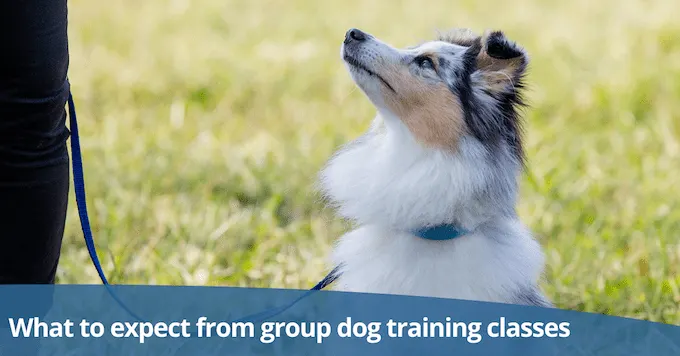
To ensure training success, make sure you:
1. Participate in group activities and learn to the best of your ability
2. Practice the commands at home and in as many situations as possible with different rewards (dog’s don’t generalize well).
3. Keep track of progress and ask questions to the trainer to improve on weaker areas.
4. Record videos of training sessions and share them with the trainer if she welcomes this. It’s something I highly encourage in my training classes. This is especially helpful when pet parents experience an unusual behavior at home with their pups and have no idea how to deal with it.
5. Continue training even after the sessions are done.
Trust me, what you learn in dog obedience classes is enough for you to communicate with your dog in day to day situations. Just make sure you’re using the commands and rewarding at the right time.
Your dog’s breed, age or past should not be an excuse not to train your dog. Every dog deserves a fair chance for a good life. Training gives them that chance. Training your dog is not a luxury, but an obligation you owe to him. You must try and make sure you get it right.
Now I’d like to hear from you!
What else should dog owners expect from group dog training classes?
In the comments, let me know what you would add to my list!
Siddhika Bhat is a certified dog trainer, behaviorist and blogger. She is a dog trainer at PetSmart. You can learn more about her and her training style on her blog, Wag a Bond.
Related articles:
- Reasons to sign up for puppy classes
- When should I start training my puppy?
- Favorite puppy training tips (Wag a Bond)

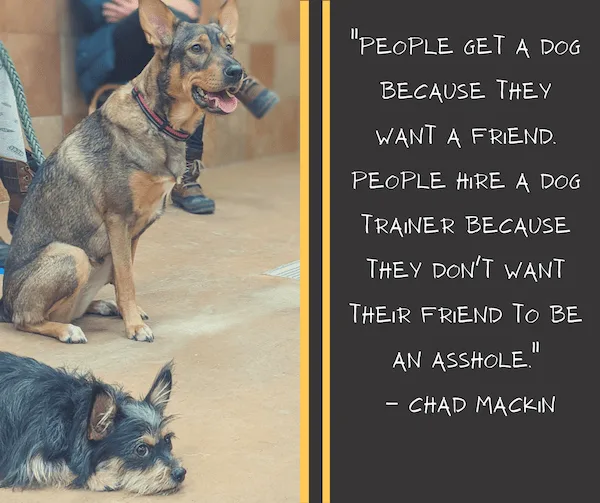
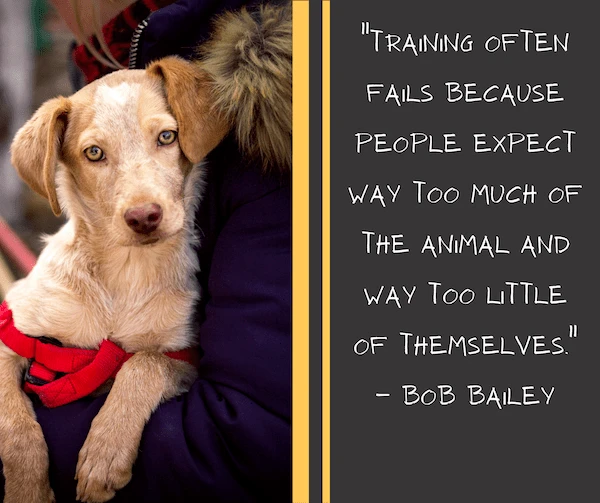
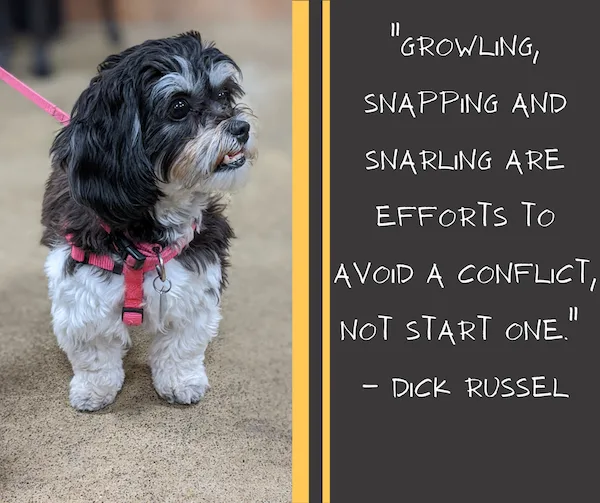
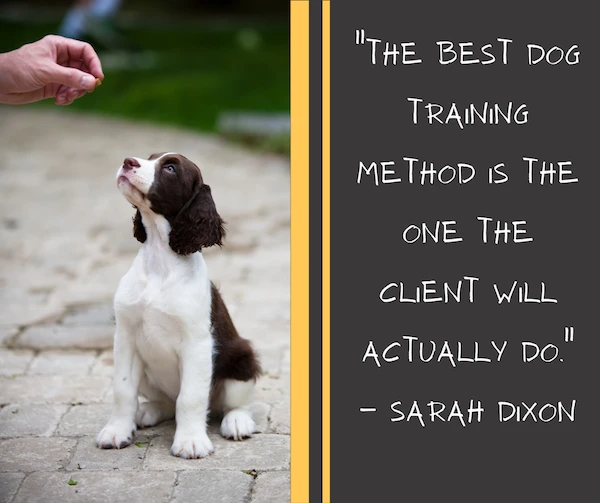
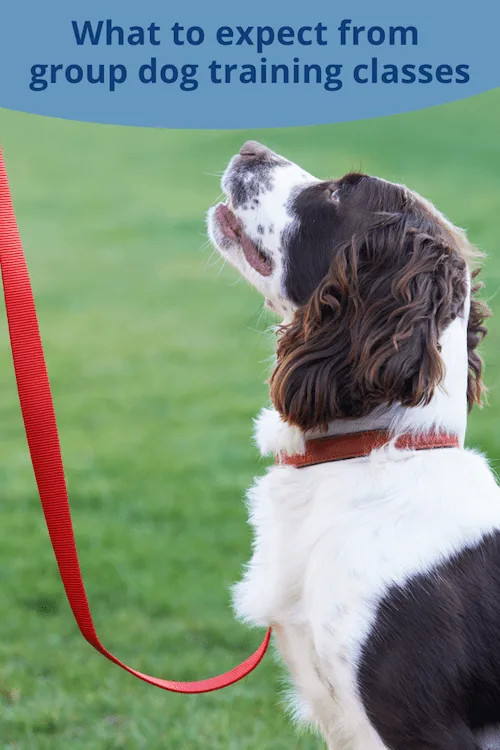
Vincent Elisius
Monday 1st of February 2021
Thanks a lot for this nice article.
However, I have been wondering if attending a dog training class actually worth until I attend one in Sydney, Australia. I was surrounded by a group of like-minded people who cherish keeping pets at home as a companion. During the class that lasted for about two hours, we shared interesting ideas that lasted a long time in my memory. It equally provided me with the opportunity to make new friends.
Finally, I encourage you to attend one within your locality if you haven't. You will never regret it.